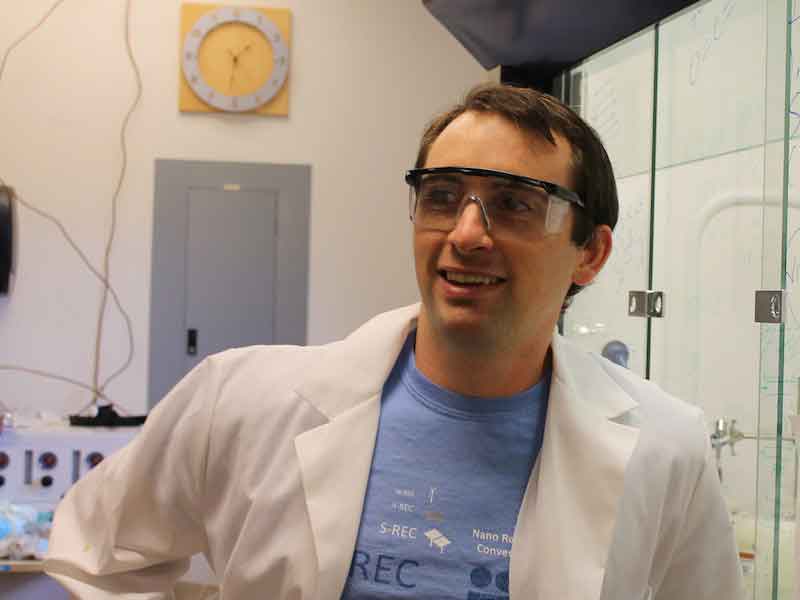A St. Mary’s College professor has received an award for developing an electroplating process for glow-in-the-dark finishes being used by the U.S. Navy.
Associate Professor of Chemistry Troy Townsend was named a 2022 Maryland Outstanding Young Scientist by the Maryland Academy of Sciences and the Maryland Science Center. Townsend was honored at a ceremony May 11 at the Maryland Science Center in Baltimore’s Inner Harbor.
Founder of St. Mary’s College’s Material Science Program, Townsend pursues the development of low-cost renewable solar energy technology through ink-jet printing of robust inorganic photovoltaics. In his lab at the College, Townsend and his students synthesize materials on the nanoscale to discover new electronic and optical properties.
Through discovery of a novel bathless metal-composite electroplating technique, Townsend is producing glow-in-the-dark hand tools for the Navy with the goal of improving mission readiness. Townsend explained in a video for the science center that in the event a mechanic drops a tool, all flights are grounded until it is found as “foreign objects like these can cause catastrophic mishaps during flight.” Townsend said the discovery of this electroplating technique allows for a much higher incorporation of fluorescent particles in the metal film, which makes the metal glow in the dark.
Townsend and his students developed a radically new method of electroplating they call “electrostamping.” Traditional plating involves submerging parts in a coating bath, but this method is bathless and can form bright fluorescent metal films. In other words, metals that glow in the dark.
Th abstract reads:
“In contrast to current composite-metal electroplating, where objects are submerged into a liquid bath, a bathless aqueous inorganic electroplating method is investigated to increase composite loading and incorporation of large hygroscopic particles. This method can be applied as a stamping coating onto large or irregular conductive objects without the need for an electrolyte bath. Instead of stirring in solution, the composite particles are trapped in the electrolyte and forced to plate within the metal matrix. In this set-up, a nickel salt mixture containing the composite is applied to the cathode and is separated from the anode with an ion-permeable membrane. As a proof of concept, large noncharged fluorescent composite particles are electrochemically embedded via electrochemical reduction of nickel salts resulting in up to 80 ± 12% surface area coverage after controlling deposition parameters of current density and duration. Long persistent afterglow SrAl2O4:Eu2+, Dy3+ phosphor powder is chosen because of its large crystal size (87 ± 30 µm) and hygroscopic nature. The photoluminescent quantum yield is measured and compared to the composite coatings, which reaches up to 9.9 ± 0.8% after 18 h of coating. Film morphology, phosphor surface loading, and film thickness are characterized by optical microscopy.”
Those interested in reading the full paper can visit https://onlinelibrary.wiley.com/doi/abs/10.1002/admi.201901282






































